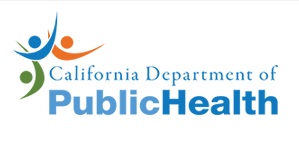Title Page
-
Conducted on
-
Prepared by
-
Location
Non BHUs, EDs and Inpatient BHUs
General Facility Safety [CAH,HAP]
-
Are plastic trash can liners absent in every space accessible to patients?
-
Are all doors to all service and supply rooms locked when staff members are not physically present?
-
Are all chemicals, including alcohol-based hand rub, kept under direct staff observation or within a locked room or area inaccessible by patients?
-
Are telephones located in corridors or common spaces for patient use securely wall-mounted and have a nonremovable shielded cord (maximum length 14 inches)?
-
Are disposable medium-weight bendable plastic cutlery used—and accounted for after meals so that patients cannot take it and use it to harm themselves or others?
Ceilings, Walls, Windows, and Doors [CAH, HAP]
-
Are the ceilings and walls solid and resistant to ligature attachment?
-
Are all air vent covers or grills designed to resist ligature attachment and secured with tamper-resistant fasteners?
-
Are window frames and sills designed to resist ligature attachment?
-
If the outside window is operable, is it limited to no more than a 4–6-inch opening?
-
Is window glass made of shatterproof material?
-
Are door hinges, handles, and locks designed to resist ligature attachment?
-
Are institutional sprinklers safely mounted to resist ligature attachment?
Lighting & Electrical Devices & Circuitry [CAH, HAP]
-
Is glass in lighting fixtures shatterproof?
-
Are light fixtures tamper-resistant and designed to resist ligature attachment?
-
Are all electrical device cover plates secured with tamper-resistant fasteners?
-
Are all electrical outlets GFCI (ground fault circuit interrupter) and tamper resistant?
-
Are outlet covers nonconductive?
-
Are electrical power cords on adjustable beds secured or replaced with removable cords? (Make sure bed can still be mechanically lowered for CPR positioning.)
-
Are power cords to TVs and other electrical devices secured?
Patient Rooms and Bathrooms [CAH, HAP]
-
If electrically operable beds are used due to medical necessity, do they have reduced-length cords and other tamper-resistant features?
-
Are closets designed safely, with all coat hooks, hangers, and poles removed?
-
Are cubicle curtain tracks removed?
-
If pull cords on nurse call or emergency call switches are provided, are they lightweight and no longer than 8 inches?
-
Are mirrors and wall decorations made of shatterproof material?
-
Are mirrors and wall decorations designed to resist ligature attachment, and mounted in a tamper-resistant manner?
-
If soap or hand hygiene product dispensers are wall-mounted, are they tamper-resistant and designed to resist ligature attachment?
-
Are grab bars and towel bars in patient bathrooms removed or designed to resist ligature attachment?
-
Are toilets (including tanks and plumbing fixtures) tamper resistant and designed to resist ligature attachment?
-
Are sinks (including faucets, valves, and plumbing fixtures) tamper resistant and designed to resist ligature attachment?
-
Are showers (including faucets and plumbing fixtures) tamper resistant and designed to resist ligature attachment?
-
Are mounting brackets for TVs removed (to prevent use as a ligature point)?
-
Are any cork bulletin boards with thumbtacks replaced with dry-mark boards?
Inpatient BHUs Only
Entrances and Exits [CAH, HAP]
-
Are entrances and exits to the unit within the line of sight of a nursing station?
-
Are nursing stations secured from unauthorized entry? Note: Walls around nursing stations should be substantial (not modular office furniture) and fixed in place. Doors should be capable of being locked. Counters should be tall and wide, if open above, to prevent patients from climbing over. Objects in the nursing station should be out of patients’ reach.
-
Do staff members take appropriate actions when individuals are entering or exiting the unit, in an effort to prevent unauthorized individuals from entering—and patients from exiting—the unit?
-
Does each staff and medical staff member present on the unit have a key on his or her person at all times and can he or she rapidly unlock the egress doors in the event of an emergency?
Panic Alarm and Response to an Event [CAH, HAP]
-
Can staff members clearly describe the location of the panic button or alarm and the process for activating it?
-
In the records for panic alarm testing, is the testing documented at the frequencies defined in the security management plan or policy?
-
Do all staff—including nonclinical staff—know the response process to follow in case of a suicide?
-
Are staff educated on the location and use of emergency equipment for suicide response?
Fire Safety and Emergency Evacuation [CAH, HAP]
-
Do the fire sprinklers have institutional heads that provide very little opportunity for attachment?
-
Are the fire extinguishers and fire pull stations locked or secured to prevent unauthorized access?
-
Does each staff member have a key on his or her person at all times with which he or she can rapidly unlock the fire extinguishers and the fire pull stations?
-
When asked to describe or demonstrate actions to take in the event of a fire, can each staff member queried clearly describe the appropriate actions, per your organization’s fire response plan?
-
When asked to describe the response in the event of an emergency requiring evacuation, can each staff and medical staff member clearly describe required actions, per the Emergency Operations Plan?
Circuit Breakers and Shutoff Valves [CAH, HAP]
-
Are electrical circuit breakers, water shutoff valves, and medical gas shutoff valves locked?
-
Do staff members have access to a key or device to unlock and access electrical circuit breakers, water shutoff valves, and medical gas shutoff valves in the event of an emergency?
Seclusion Rooms [CAH, HAP]
-
Are seclusion rooms free of blind spots in which staff cannot see patients without entering the room?
-
Are seclusion rooms free of potential hazards to patients, including all those previously cited, plus the following? Furniture is secured and free of separate pieces or parts. The room is free of decorations.



















